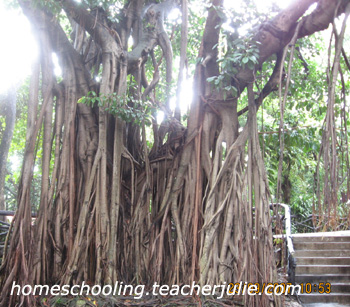December 7, 2007
Science, The Son
No Comments
Lesson 9
You need light to see.
Light may come from natural or man-made.
Natural light are the sun and the moon.
Man-made lights are those that use electricity and/or batteries to give off light. Examples are: light bulbs, flashlight, fluorescent lights.
Other man-made lights are candles, gas lamps and/or torches. Gas lamps and torches need fuel such as kerosene to produce fire.
November 30, 2007
Science, The Son
No Comments
Lesson 8
Heat is important. The Sun is the major source of heat on Earth.
Heat is useful in among others: cooking the food, ironing the clothes, boiling water, keeping the body warm, drying wet clothes.
Too much of it can harm living things.
Heat can cause burns and blisters.
November 30, 2007
Science, The Son
No Comments
Lesson 7
Objects may float or sink
These objects floated during our experiment: pencil, cotton bud, paper boat. Objects that are very light float on water.
These objects sank when we did the experiment: paper clip, fastener. Objects made of metals, glass and cement are heavy. When placed in water, these sink.
November 23, 2007
Science, The Son
No Comments
Lesson 5
Space can be Measured
Matter occupies space and this space can be measured.
The length of an object tells how long it is. Its width tells how wide it is. The height tells how high or how tall it is. By getting the length, width and the height, you can tell how much space it occupies. This is called volume.
Lesson 6
Matter has Mass.
Mass is the amount of matter an object is made up of.
November 16, 2007
Science, The Son
No Comments
Lesson 3
Matter has color and smell.
Primary colors: red, yellow and blue.
Secondary colors: green, purple and orange
Odors: pleasant and unpleasant
These two properties are used to describe and identify matter.
Lesson 4
All objects occupy space.
Solids and liquids occupy a definite space.
Gases spread out to fill the space of the whole container regardless of its sizes.
September 26, 2007
Images, Science
No Comments
Notes #8
Some parts of plants are common to many plants.
Plants may differ in color, shape and texture.
Plants may also differ in hardness of stem and root growth.

Â



